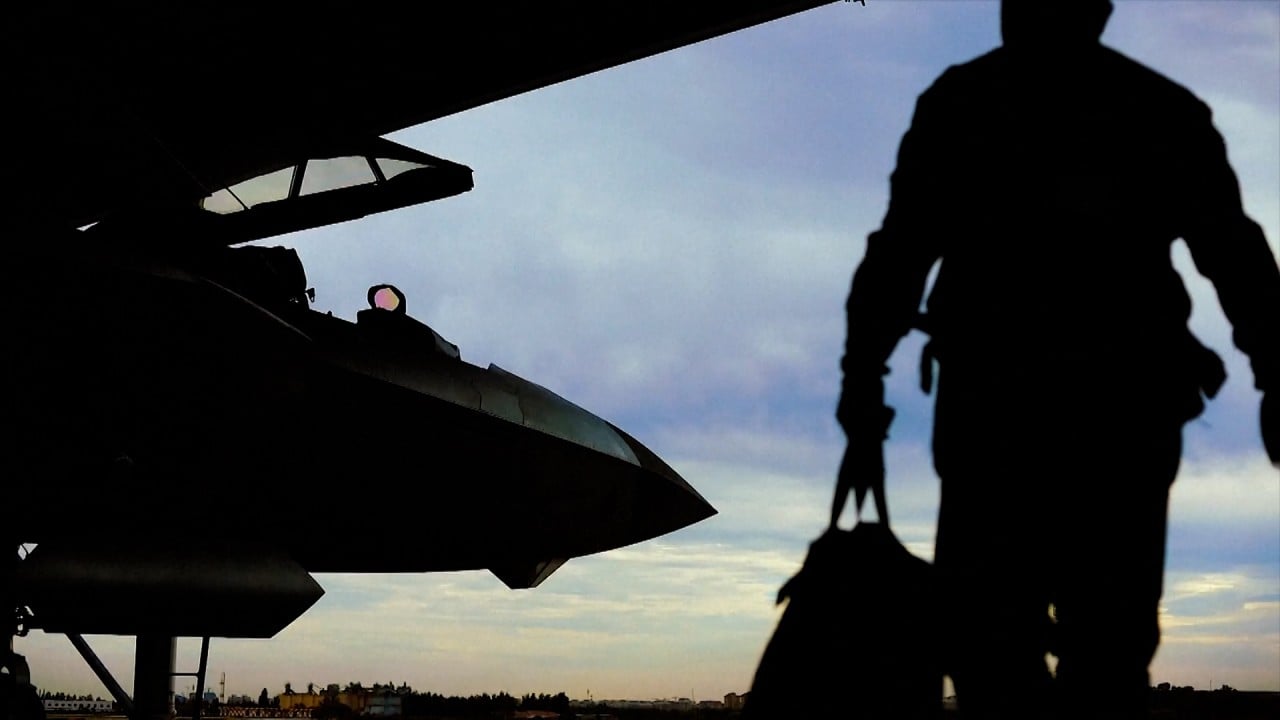
Chinese scientists create a ‘plasma shower’ to improve stealth bomber performance
- The device can stimulate air flow and increase the lift coefficient of an aircraft by nearly a third, preventing the aircraft from stalling, say researchers
- China is developing plasma technology for other applications, including attitude control of hypersonic aircraft and to improve invisibility to radar
Chinese researchers say they have developed a plasma device that could significantly improve the aerodynamic performance of stealth bombers.
The device is a strip of thin membrane covering the front area of a flying wing aircraft.
When the speed of air flowing on top of the wings slows to a point that could lead to a stall, the membrane senses danger in advance and ionises air molecules with high-voltage electricity, generating a shower of plasma – or electrically charged particles – over the wings.
The plasma shower can stimulate air flow and increase the lift coefficient of an aircraft by nearly a third. This could prevent a stall, even if the aircraft drops to an unusually slow speed (108km/h or 67mph) with a pitched-up nose, according to the researchers.
The new device could respond to the change of air flow quickly, using considerably less energy than those consumed by similar devices before, they said in a paper published in the Journal of Aerospace Power, a peer-reviewed publication run by the Chinese Society of Aeronautics and Astronautics.
“This is of great significance for the application of plasma active flow control technology in aircraft,” the team, led by Niu Zhongguo from the AVIC Aerodynamics Research Institute in Harbin, wrote
A stealth bomber uses a flat airframe without a tail to reduce the chance of radar detection. But this wing-body design makes flight control more difficult, especially at lower speeds.
Game changer? China builds heat-seeking radar that can detect jets 300km away
In 2008, a B-2 stealth bomber crashed at Andersen Air Force Base in Guam, the largest US military base in the Western Pacific region. The US Air Force investigation found the crash was caused by a stall soon after take-off.
The B-2’s flight control computer failed to identify data produced by faulty sensors and pulled the plane off the runway too quickly.
Two pilots ejected in time but the US$1.4 billion-dollar bomber was destroyed.
Niu and his colleagues said the plasma technology could help prevent such a costly accident.
The researchers said when the aircraft nosed up at a relatively slow speed, some locally spinning turbulence could occur over the wings and separate the wing surface from the moving airflow.
In physics, it was equivalent to the plane coming to a complete stop in perfectly still air. Although still flying, it would drop like a stone.
The plasma could reduce the turbulence and bring the moving air down to make direct contact again with the surface of wings, Niu said.
The results of a wind tunnel experiment using a scale model suggested the technology worked as planned, according to their paper.
But Niu’s team said the plasma device must be activated just before the aircraft entered a stall – and predicting that was extremely difficult because turbulence could happen at almost any time and anywhere on the wings.
China is in a race with other countries to bring plasma technology to aircraft.
Research teams in the US, Germany and Japan have built drones with plasma actuators and proved the effectiveness of the technology in the open air. But most of these devices need to be turned on or off manually, and they have to work continuously during a designated period.
For real-life applications, the plasma device must have precise control and high energy efficiency, according to the Chinese researchers.
In a separate paper published last year, Niu’s team said their research had accelerated the “engineering application” of the technology.
With funding from the government and military, Chinese scientists are developing plasma technology for many other applications, including the attitude control of hypersonic aircraft that can travel at five times the speed of sound, a “plasmal cloak” that could improve invisibility to radar and “plasma antenna” that can pick up weak signals in a small format, according to openly available information.
The Northrop Grumman B-2 Spirit entered service in 1997 and now remains the only stealth bomber in service in the world.
Is that a clothes rack on the rooftop or China’s new anti-stealth radar?
The People’s Liberation Army confirmed last year it was developing a stealth heavy bomber.
Some military experts believe the H-20, which is capable of carrying nuclear weapons and hypersonic missiles, will help China challenge the military power of the US in many places around the world.



